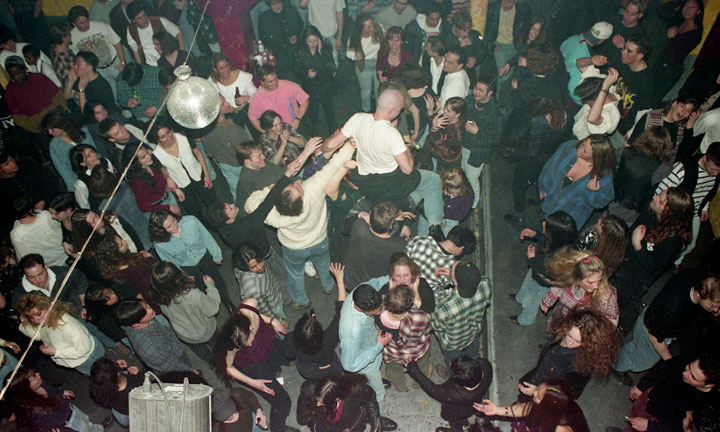Anything could happen at Club Z. Photos courtesy of INK Entertainment.
Article originally published February 16, 2012 by The Grid online (TheGridTO.com).
In this instalment of her ongoing nightlife-history series, Denise Benson looks back at the first club creation of Toronto nightlife magnate Charles Khabouth. At just 22 years old, he opened Club Z in 1984, but its groundbreaking legacy lives on to this day.
BY: DENISE BENSON
Club: Club Z, 11A St. Joseph Street
Years in operation: 1984-1989
History: Tracing the history of this city’s nightlife tells us much about its physical transformation and urban development. Nowhere is this more obvious than at the corner of Yonge and St. Joseph. Here, we’ve recently seen a few significant buildings largely demolished as part of their ongoing metamorphosis into Five Condos.
I had often wondered about the physical similarities between the original red brick buildings at 610 Yonge, 5 and 11 St. Joseph, and 15 St. Nicholas, but only recently noticed the plaque on 11’s easterly side. It turns out that moving and storage company Rawlinson Cartage built all of them, with the warehouse space of 11 St. Joseph constructed between 1895 and 1898.
Gay Torontonians who socialized in the 1970s and early ‘80s will remember 11A St. Joseph as popular all-ages discotheque Club Manatee, a three-level spot where the DJ booth was in the bow of a boat hanging above the crowd.
In September of 1984, directly after the Manatee’s closing, a 22-year-old Charles Khabouth debuted as a nightlife entrepreneur by opening Club Z in that very location. Now known as the CEO of INK Entertainment, whose many impressive properties include The Guvernment, La Société Bistro and the Bisha hotel/condo project, Khabouth started with just $30,000 and a desire to fuse his love of music, fashion and dance.














